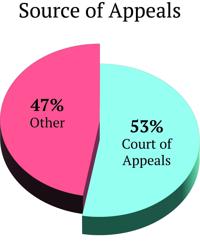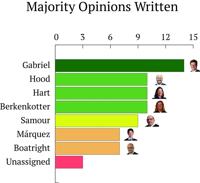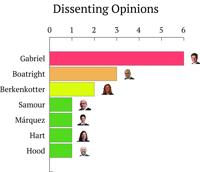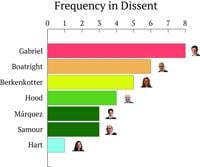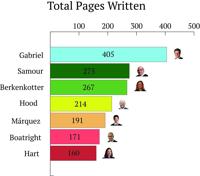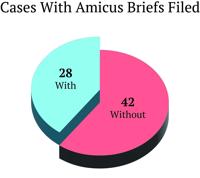Colorado Supreme Court term in review: Restitution, racial bias, rescinded opinion and more
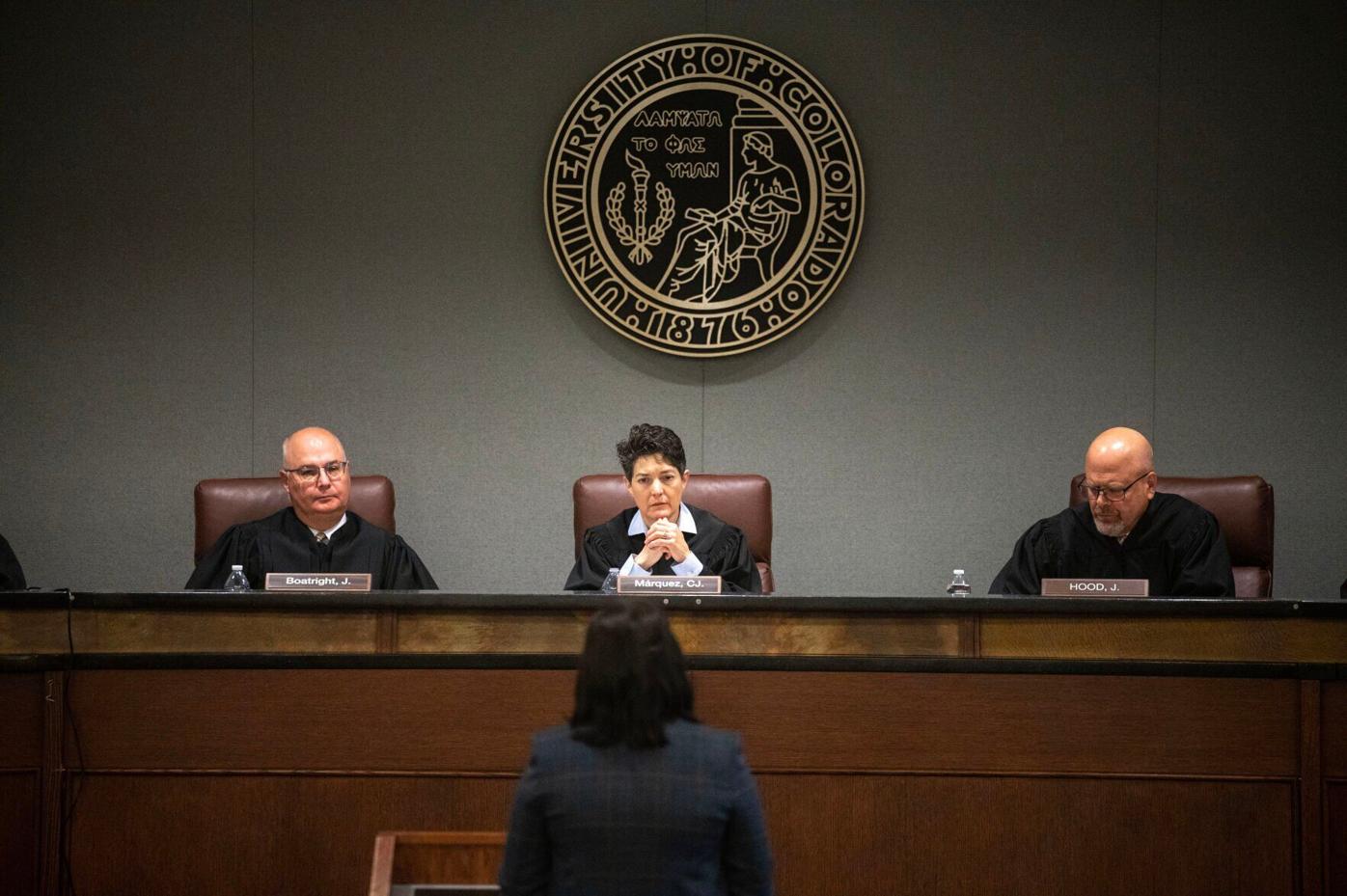
(From left) Colorado Supreme Court Justice Brian D. Boatright, Chief Justice Monica M. M á rquez and Justice William W. Hood III listen to arguments from Assistant Attorney General Caitlin E. Grant during the People v. Rodriguez-Morelos case as part of Courts in the Community at the Wolf Law building at University of Colorado Boulder on Thursday, Oct. 24, 2024. The semi-annual event entails the Colorado Supreme Court hearing arguments before an audience of students throughout the state. (Stephen Swofford, Denver Gazette)
Stephen Swofford Denver Gazette
The Colorado Supreme Court’s most visible decision of its recently concluded term may actually be the one it made five years ago.
In 2020, with the retirement of then-Chief Justice Nathan B. Coats, the court’s other members decided to switch to a rotational method of filling the seat, with the judicial branch’s top job term-limited to approximately three years. Last summer, the first rotation occurred, with Justice Brian D. Boatright stepping down and Chief Justice Monica M. Márquez stepping in.
Since then, the “Márquez court” has made big moves in key areas.
It decided a bundle of five appeals about crime victim restitution that effectively excused trial judges from strictly complying with the law in certain instances; adopted a rule to curb racial discrimination in jury selection that advocates deemed far weaker than originally proposed; and permitted local governments to sue fossil fuel producers over alleged local impacts of climate change.
The justices also took the unusual step of issuing an opinion recognizing the right to a jury trial in some eviction cases — only to rescind it months later and leave the issue to the legislature. In another case, lawmakers acted immediately to change Colorado law and overrule the court’s 4-3 interpretation of the competency process for juvenile defendants.
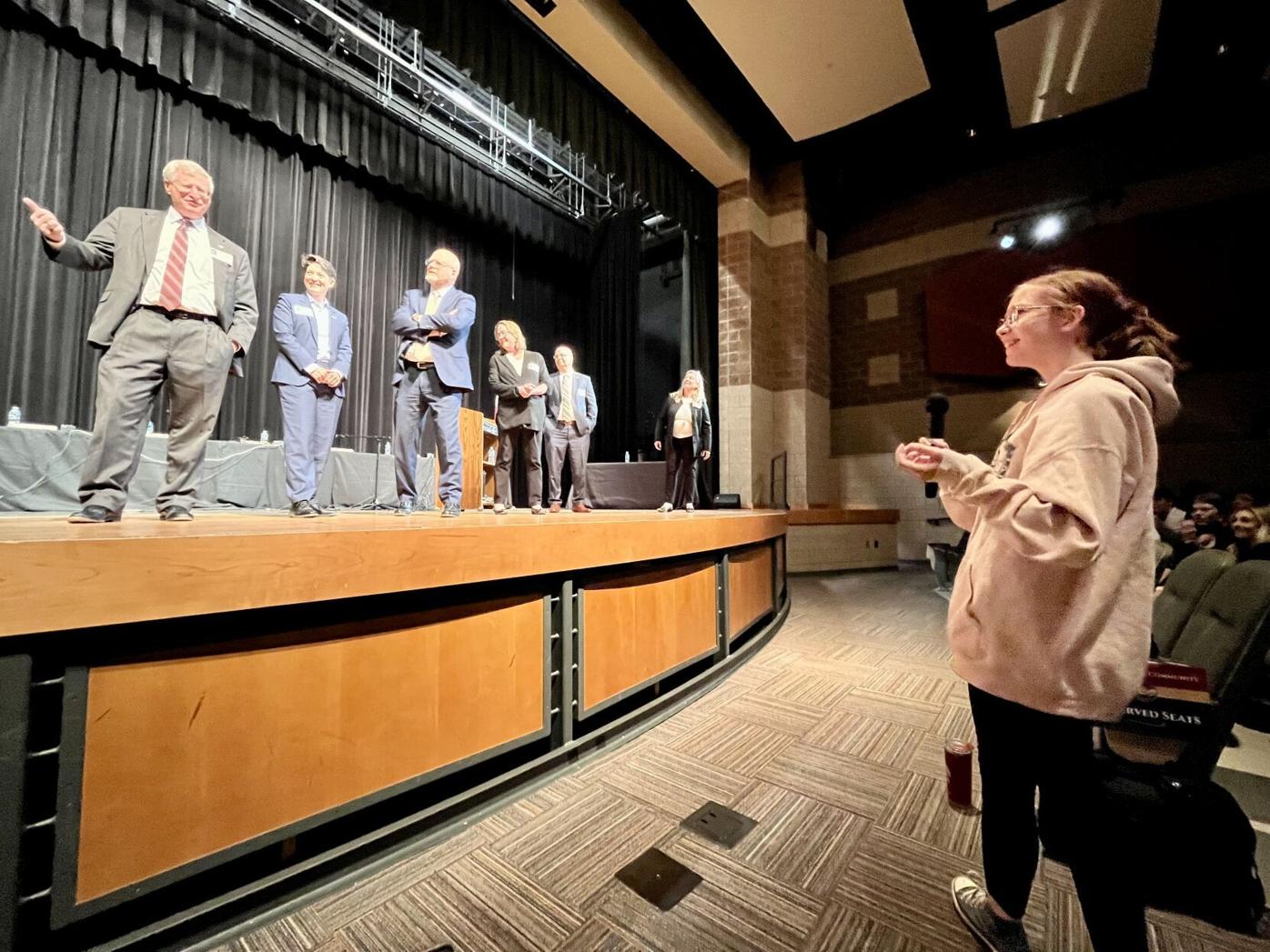
A Falcon High School student asks a question of the Colorado Supreme Court during its "Courts in the Community" visit to Peyton, Colo. on May 15, 2025.
Michael Karlik michael.karlik@coloradopolitics.com

A Falcon High School student asks a question of the Colorado Supreme Court during its “Courts in the Community” visit to Peyton, Colo. on May 15, 2025.
Out of court, the justices gave unusually personal and noteworthy glimpses into their lives.
Justice Melissa Hart spoke at a September judicial conference about how she was “swatted” at her home following the court’s high-profile decision from 2023 to disqualify now-President Donald Trump from the ballot. Márquez, speaking at a gathering shortly after the 2024 election, said the same case “came at a real cost. Not just to me.”
Colorado Politics counted 70 opinions the Supreme Court issued between July 2024 and June 30, 2025. That total included its rescinded opinion in the eviction case, disciplinary matters and questions answered at the request of federal judges. The list was shorter than the 76 written opinions the justices issued between 2023-2024. However, the court resolved certain cases via unsigned orders and, in two child neglect cases, dismissed the appeals while addressing the legal issues through a rule change.
Court by the numbers
Of the 70 majority opinions, 79% were unanimous — roughly the same percentage as last term.
The 15 decisions with partial or full dissents included nine that split the justices 5-2 or, in one instance, 4-2 with one recusal. The remaining six non-unanimous decisions were evenly divided between votes that were 4-3 and 6-1 as to the outcome. However, in certain instances, justices’ concurrence with the result masked their underlying disagreement with the majority’s reasoning.
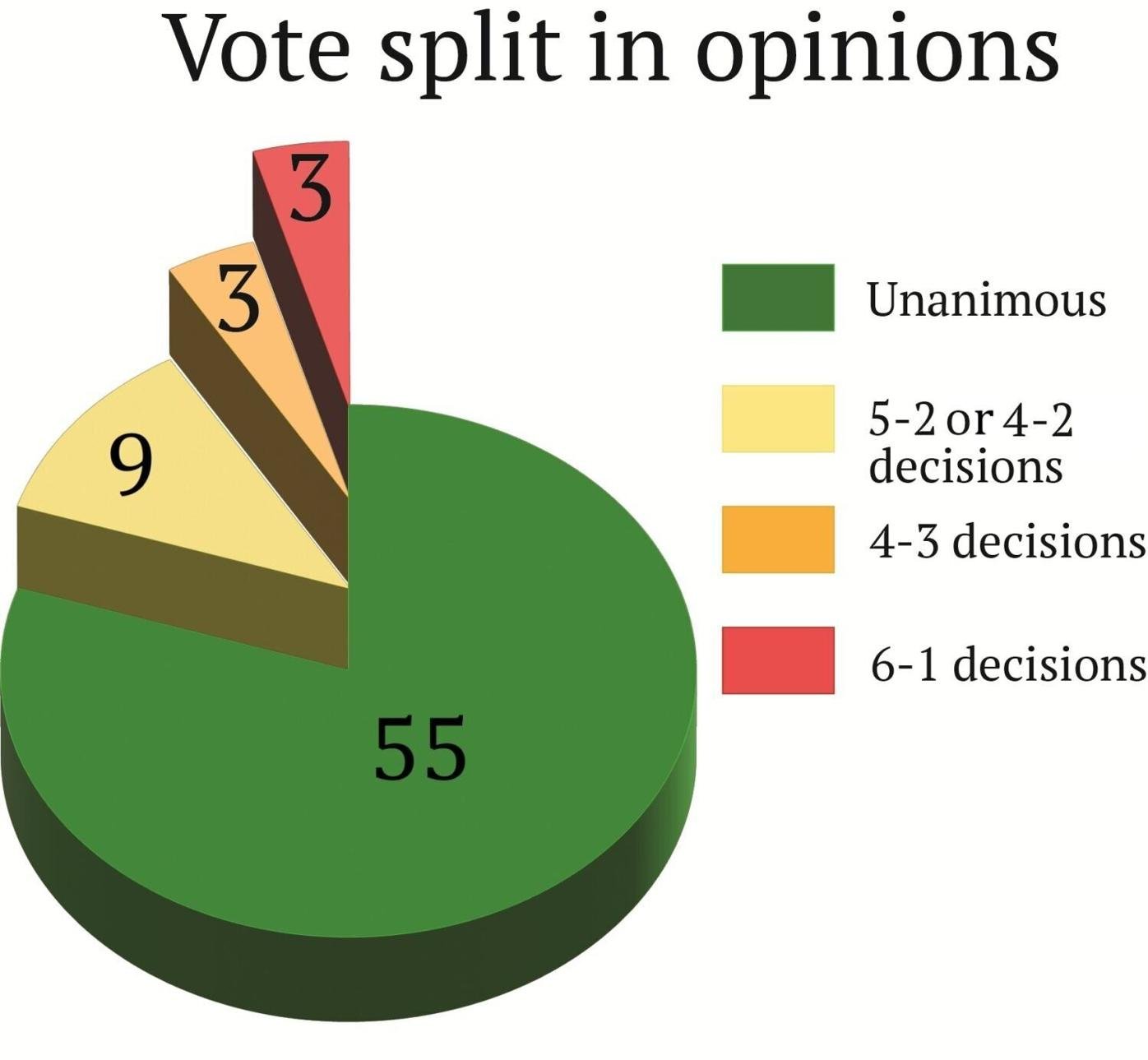

Slightly more than half of the cases came to the Supreme Court following a decision by the Court of Appeals, with the remainder coming directly from the trial courts, from the judicial discipline commission or other avenues.


Setting aside the three opinions that did not have an identified author, Justice Richard L. Gabriel wrote the highest number of majority opinions at 14. He also authored the most opinions of any member: 24 majority, concurring and dissenting opinions. That was nearly double the output of the next-most-prolific opinion-writer.
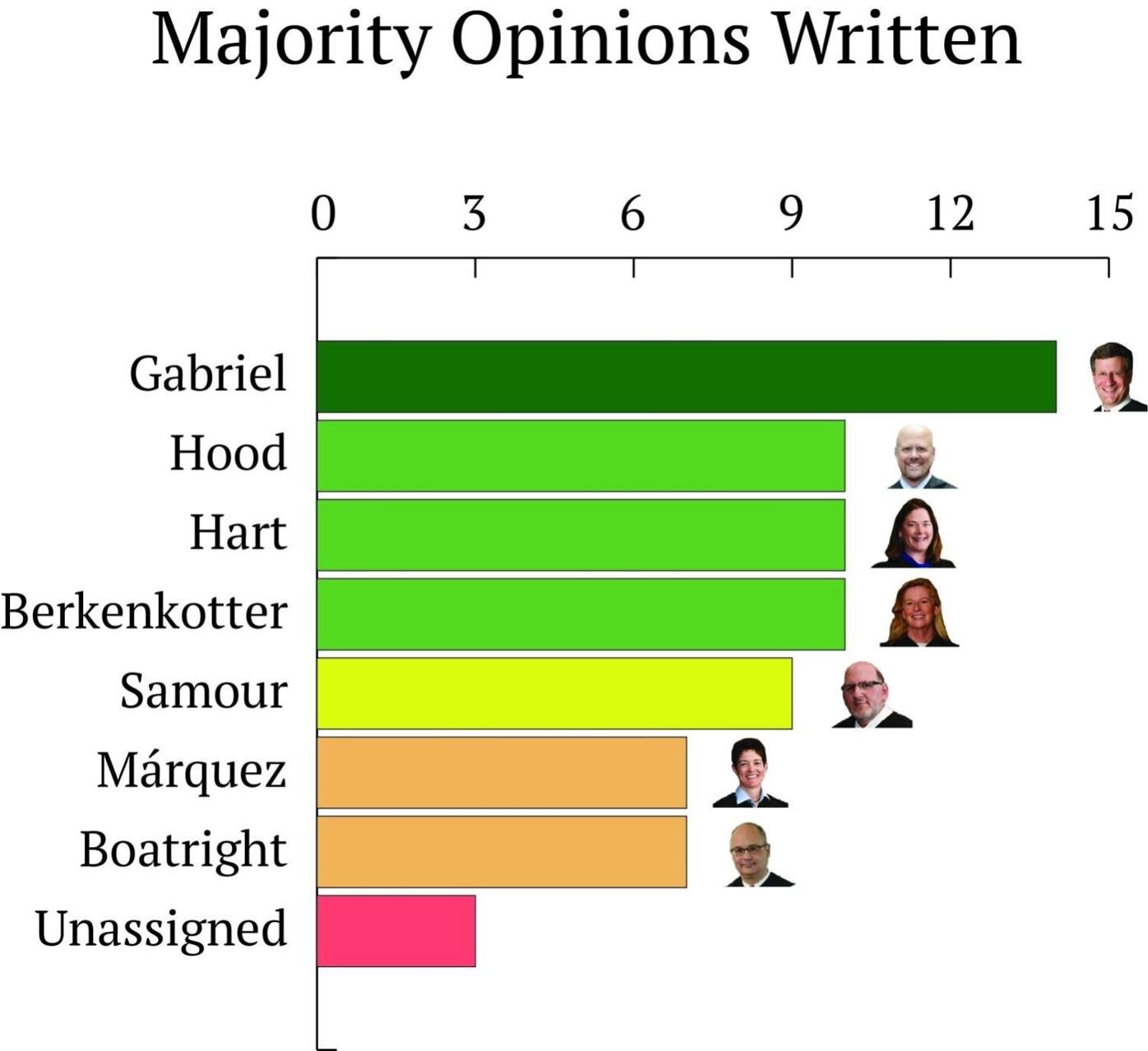

Justices William W. Hood III, Melissa Hart and Maria E. Berkenkotter each wrote 10 majority opinions, with Justice Carlos A. Samour Jr. close behind with nine. The two most senior members of the court, Boatright and Márquez, wrote seven each.
There were relatively few concurring opinions, although Gabriel wrote three simultaneously for the package of restitution cases.
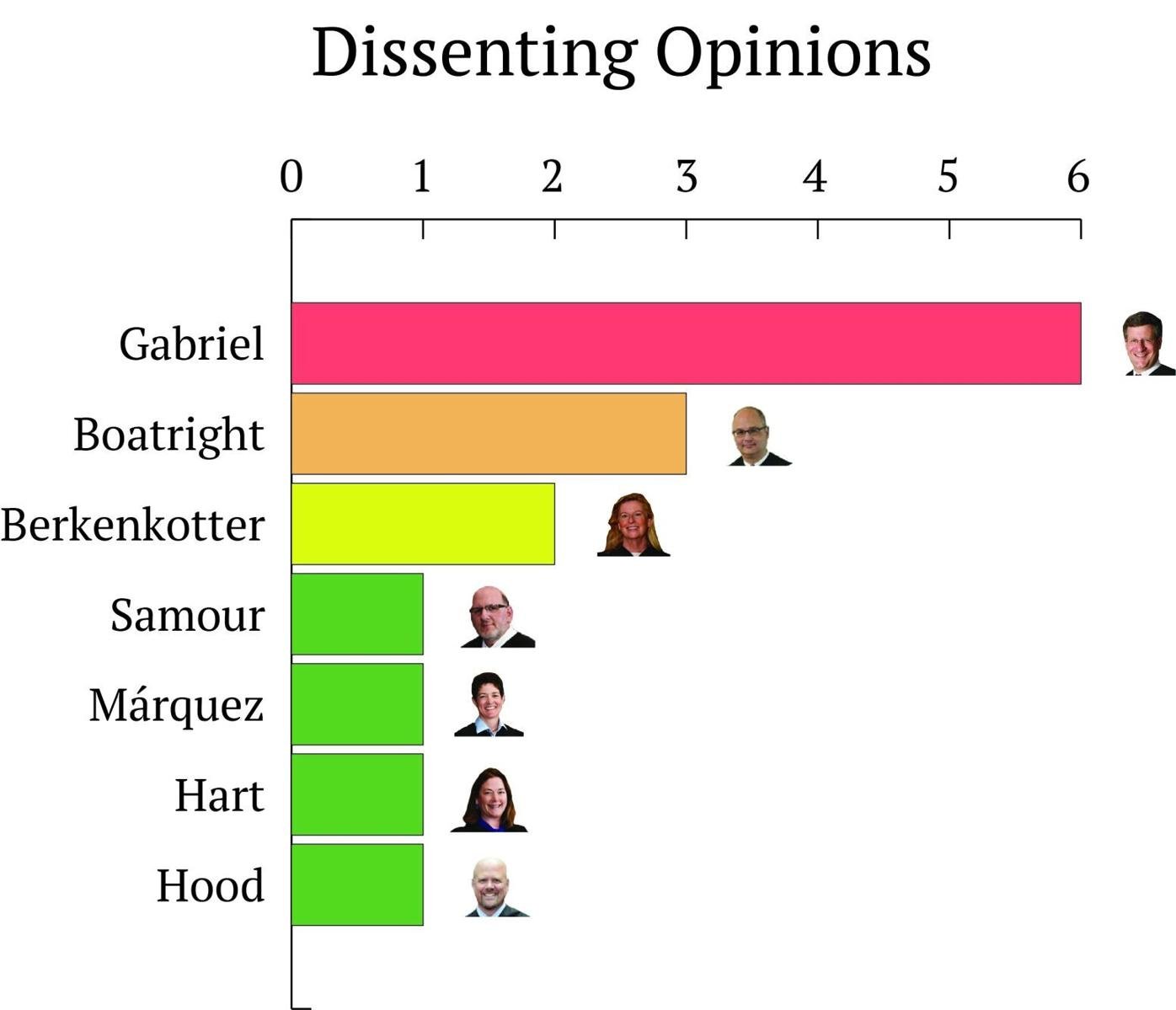

There were 15 total dissenting opinions, with Gabriel authoring nearly half of those. Including the two dissents he joined but did not author, Gabriel was also in dissent most frequently — with eight cases. He dissented in an LGBTQ discrimination case that fizzled on procedural grounds, a case questioning whether anyone but the government can litigate child neglect allegations, and a case where a judge imposed sanctions on a prosecutor at the prosecutor’s suggestion, among others.
Although there was a relatively low number of dissents featuring multiple justices in the minority, Hood and Berkenkotter most frequently joined Gabriel in dissenting.


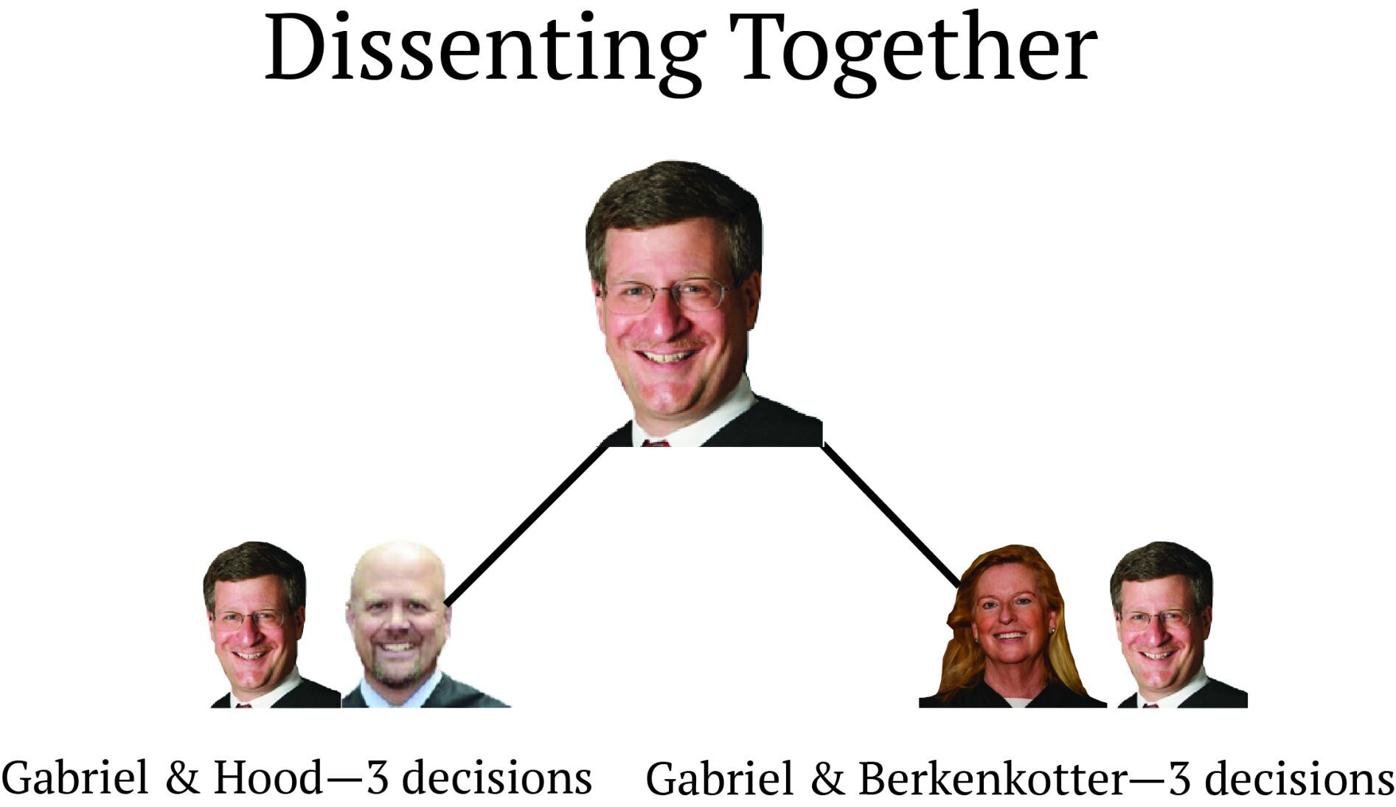

Last term, Márquez was the most frequent dissenter. This term, she only authored one dissenting opinion and joined two others.
Meanwhile, Hart was the justice most likely to be on the prevailing side.
Across all types of opinions, Gabriel wrote the greatest volume of text at 405 pages. That was substantially more than Samour’s 275 pages and Berkenkotter’s 267 pages, which were the closest to Gabriel’s output. Hart’s page count was the lowest at 160 — her same number as the previous term.
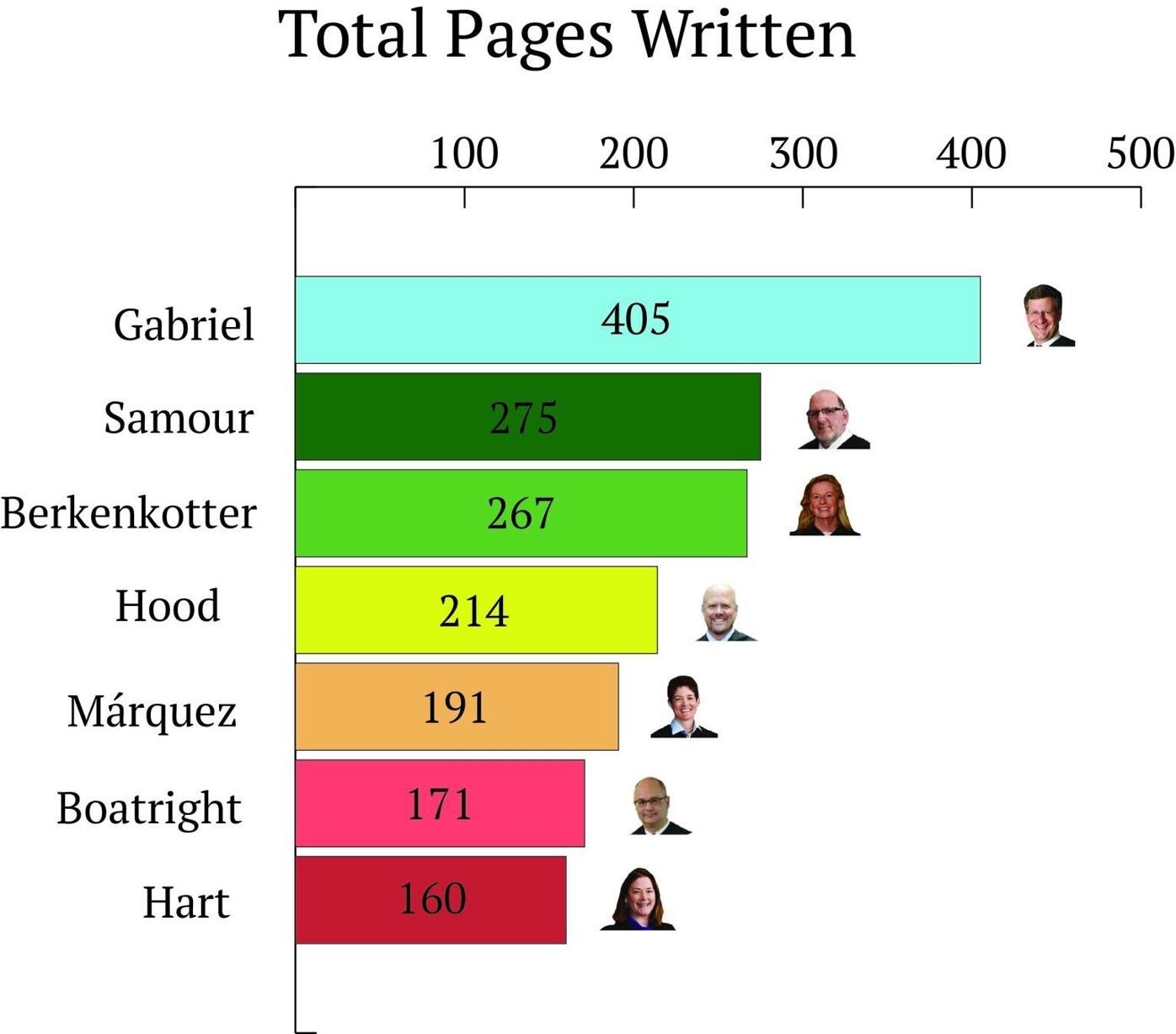

Although categorizing the outcomes of appeals is not always a straightforward task, the Supreme Court reversed lower courts on the key issue in a case roughly 37% of the time. Also, 40% of cases attracted one or more briefs from outside organizations, known as amicus briefs. Such filings were in support of one party or, on occasion, intended only as informational for the court.
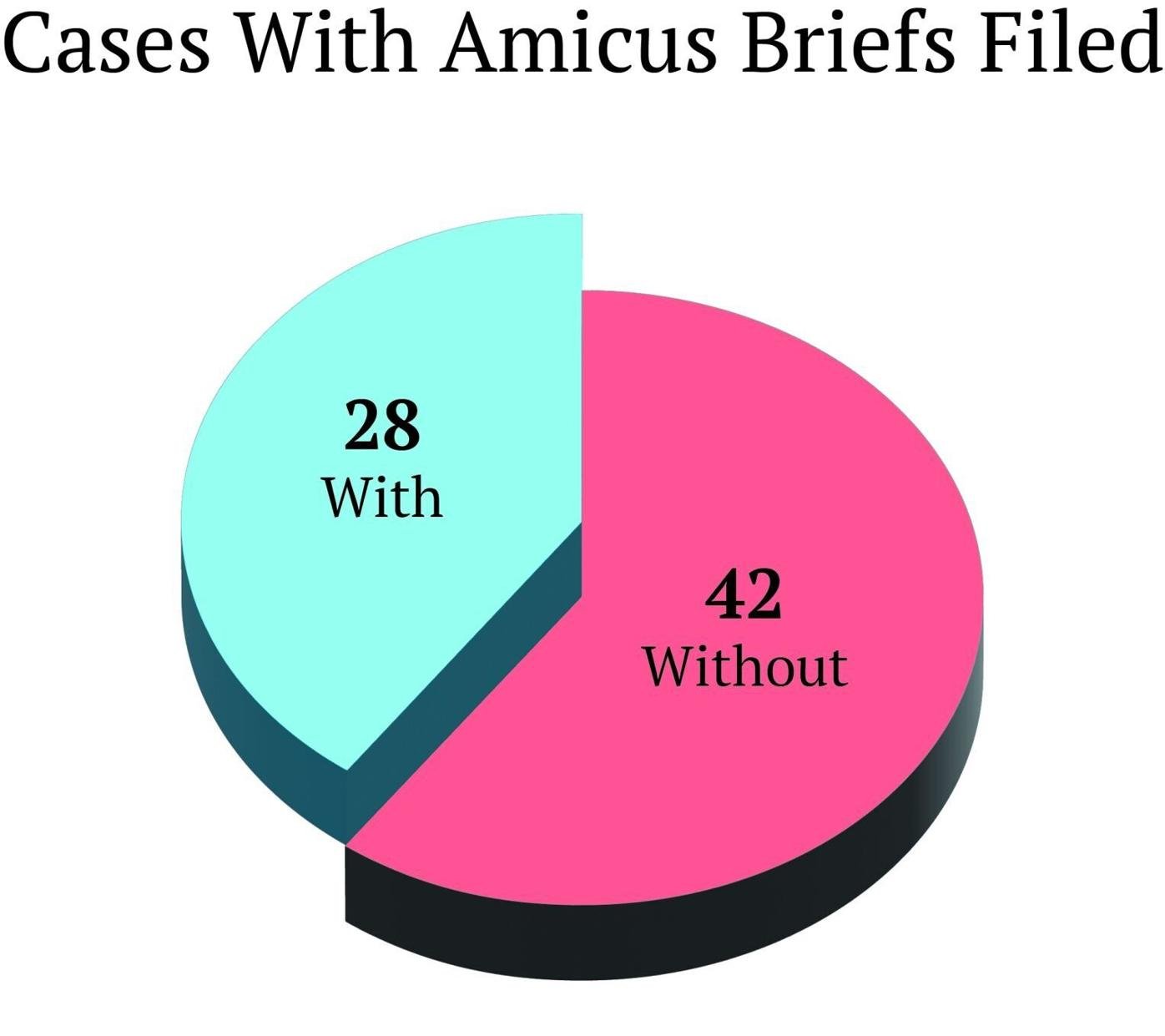

The Supreme Court will return for oral arguments in September. In addition to the cases it has accepted, the court will also hold hearings on proposed rule changes involving the limited practice of law by licensed legal paraprofessionals and the framework for attorney discipline.
Editor’s note: This article has been updated to correct the total number of dissenting opinions, which is 15.







